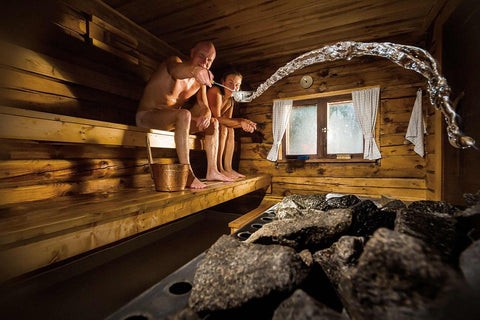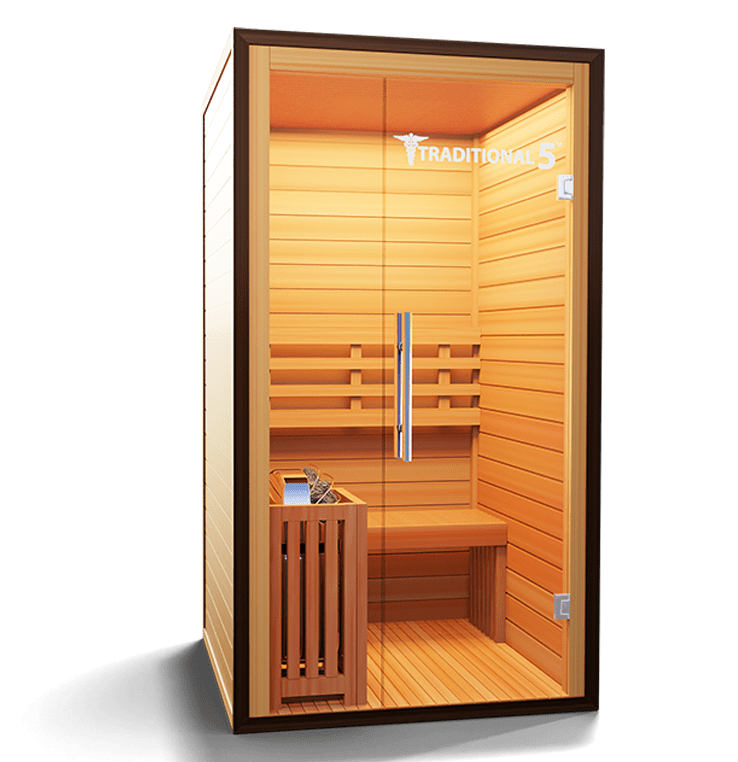The 5-Minute Rule for Traditional Sauna
The 5-Minute Rule for Traditional Sauna
Blog Article
Rumored Buzz on Traditional Sauna
Table of ContentsLittle Known Questions About Traditional Sauna.The Best Guide To Traditional SaunaSome Ideas on Traditional Sauna You Should KnowSome Known Details About Traditional Sauna The Basic Principles Of Traditional Sauna
Energy cost savings is one thing to consider for individuals who intend on utilizing their sauna frequently. For a conventional sauna, bathers normally need to wait for 30-40 minutes for the space to pre-heat prior to entering. Infrared saunas, on the various other hand, normally reach their suitable temperature level in about 15 minutes.That implies that in an infrared sauna, bathers can start enjoying their sauna quickly. One distinction in between the two types of sauna that is typically forgotten is the social experience.

Not known Facts About Traditional Sauna

Attempt a sauna today and find several of the impressive benefits on your own!.

Variables such as warmth resistance, preferred level of detoxing, and overall health must be taken into account when deciding which type of sauna to make use of. Infrared saunas are a kind of sauna that utilize infrared light to heat up the body straight, instead of warming the air around the body like conventional saunas.
Traditional Sauna for Dummies
The temperature in an infrared sauna is commonly reduced than in a standard sauna, with temperatures ranging from 120F to 150F. Infrared saunas offer a series of advantages that make them an attractive alternative for those seeking to enhance their health and well-being. Several of the advantages of infrared saunas include: Infrared saunas make use of lower temperature levels than traditional saunas, which can make them extra comfortable for those who discover heats difficult to endure.
Infrared saunas have actually been revealed to assist the body remove contaminants with sweating. Sweating can additionally assist to improve skin health and wellness by getting rid of contaminations and dead skin cells.
The warm created by infrared saunas can assist to boost blood flow and boost circulation. Infrared saunas have been revealed to help reduce stress and advertise relaxation.
With their reduced temperatures, deep infiltration, and variety of health advantages, infrared saunas are a terrific way to unwind, relax, and improve your general wellness. Traditional completely dry saunas have been around for centuries and are still prominent today. They pop over to this web-site are typically heated with wood, gas, or power and have reduced humidity degrees.
The Basic Principles Of Traditional Sauna
There are several advantages to making use of a conventional dry sauna. Here are a few: Relaxation: The heat and low moisture in traditional completely dry saunas can aid kick back the muscle mass and decrease anxiety levels. Cleansing: Sweating in a sauna can assist eliminate toxic substances from the body, which can improve general health.
When it comes to saunas, there are two main sorts of heating methods: standard and infrared. Traditional saunas utilize heated air to warm up the body, while infrared saunas utilize infrared radiation to pass through the skin and warm the body from within. Among the primary distinctions in between both methods is the sort of warm they produce.
Traditional saunas heat the air, which after that heats up the body through convection. Infrared saunas, on the other hand, warm the body straight through radiation.
In terms of power efficiency, infrared saunas are generally much more efficient than traditional saunas due to the fact that they call for much less power to operate. They additionally warm up quicker, so they can be used for much shorter sessions. Traditional Sauna. When it involves the results on the body, both sorts of saunas have actually been revealed to have benefits
Everything about Traditional Sauna
Infrared saunas have been shown to have similar benefits, in addition to potentially assisting with detoxification, skin health, and immune function. Generally, the selection in between a standard or image source infrared sauna boils down to personal preference and private demands. Traditional saunas may be better for those that like higher temperatures and a much more extreme sweat feedback, while infrared saunas might be better for those who want a more gentle and effective warmth treatment.
Both kinds of saunas supply special advantages and downsides that need to be taken into consideration before deciding. The selection in between an infrared sauna and a traditional completely dry sauna largely depends on personal choice and the wanted advantages. Those that choose a more comfortable, lower temperature environment might favor an infrared sauna, while those that are seeking her comment is here extreme warmth and a conventional sauna experience may prefer a traditional completely dry sauna.
Below are some safety and security pointers to maintain in mind when utilizing infrared and conventional dry saunas:: Saunas can cause excessive sweating, resulting in dehydration. It is necessary to drink lots of water previously, during, and after sauna sessions to stay hydrated.: It is suggested to limit sauna sessions to 20-30 mins to stay clear of overheating and dehydration.
Report this page